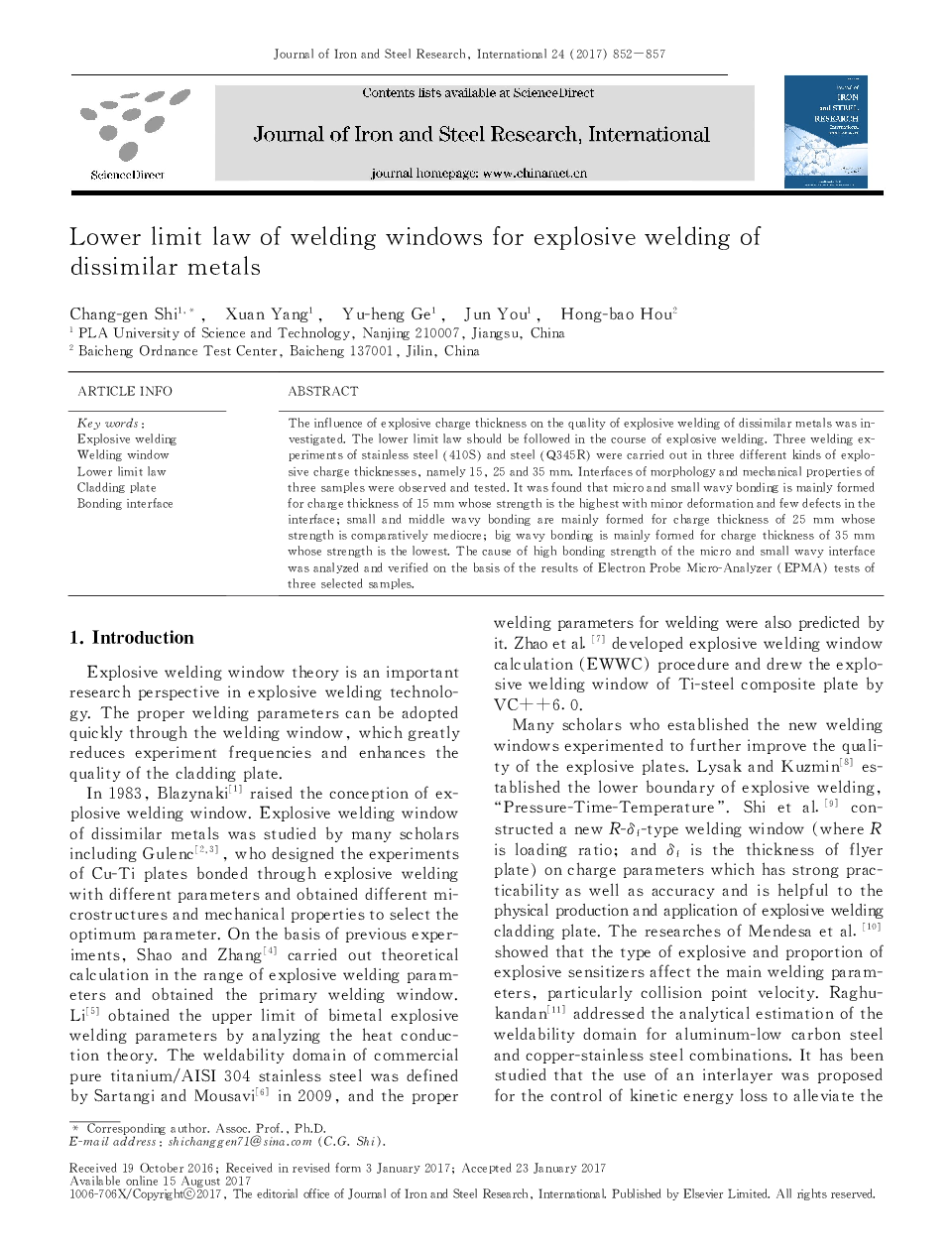| Article ID | Journal | Published Year | Pages | File Type |
|---|---|---|---|---|
| 8004222 | Journal of Iron and Steel Research, International | 2017 | 6 Pages |
Abstract
The influence of explosive charge thickness on the quality of explosive welding of dissimilar metals was investigated. The lower limit law should be followed in the course of explosive welding. Three welding experiments of stainless steel (410S) and steel (Q345R) were carried out in three different kinds of explosive charge thicknesses, namely 15, 25 and 35 mm. Interfaces of morphology and mechanical properties of three samples were observed and tested. It was found that micro and small wavy bonding is mainly formed for charge thickness of 15 mm whose strength is the highest with minor deformation and few defects in the interface; small and middle wavy bonding are mainly formed for charge thickness of 25 mm whose strength is comparatively mediocre; big wavy bonding is mainly formed for charge thickness of 35 mm whose strength is the lowest. The cause of high bonding strength of the micro and small wavy interface was analyzed and verified on the basis of the results of Electron Probe Micro-Analyzer (EPMA) tests of three selected samples.
Keywords
Related Topics
Physical Sciences and Engineering
Materials Science
Metals and Alloys
Authors
Chang-gen Shi, Xuan Yang, Yu-heng Ge, Jun You, Hong-bao Hou,
